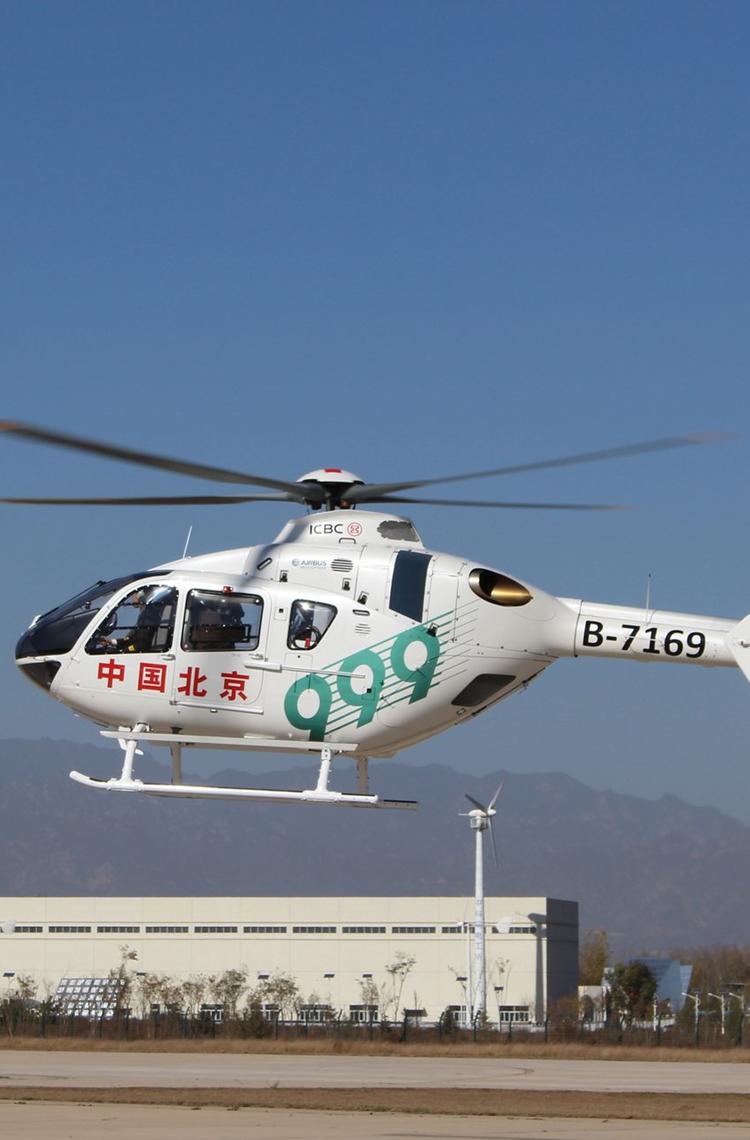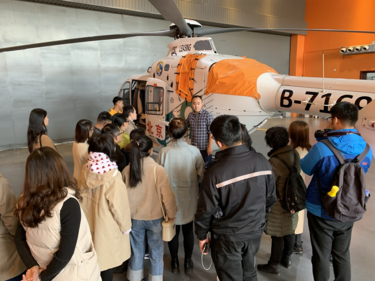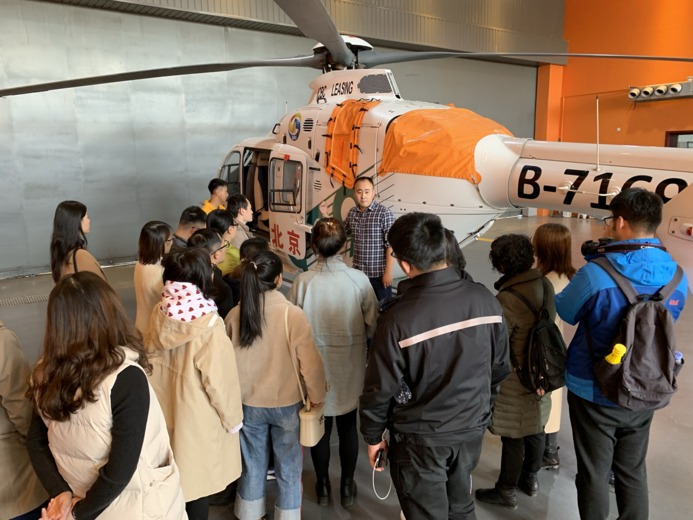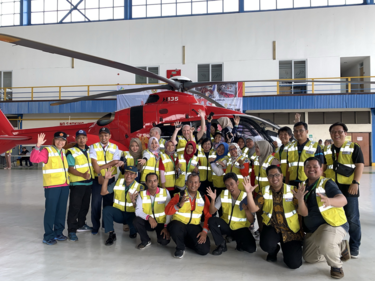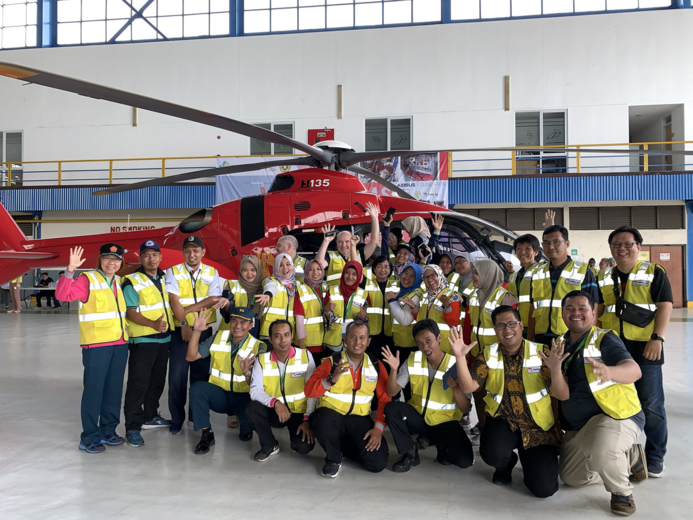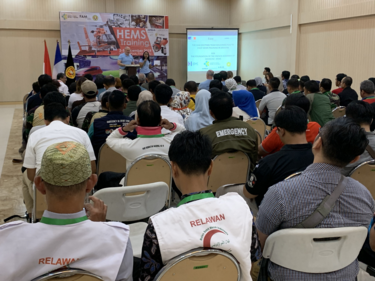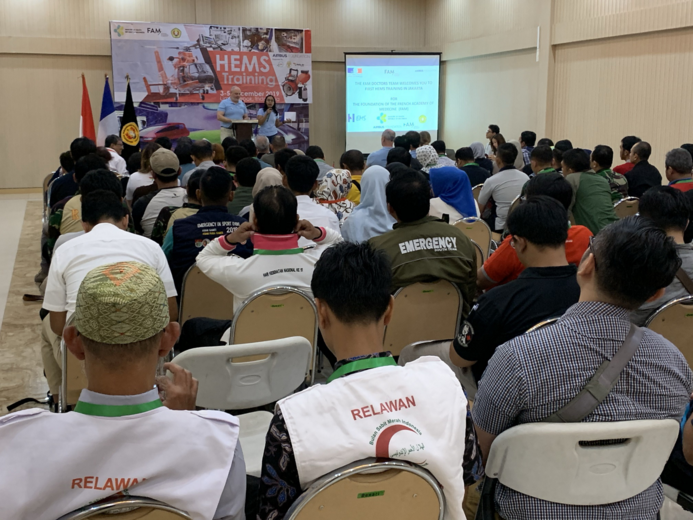When seconds count during an emergency, the deployment of helicopters for urgent airlift could make the difference in saving lives. A training outreach programme backed by the Airbus Foundation is bringing valuable expertise in helicopter emergency medical services (HEMS) to countries where such coordinated operations between medical services and hospitals do not yet exist, or are in their infancy. An outfitted HEMS helicopter provides highly capable critical care, equipped as a flying ambulance and carrying skilled medical personnel.
Bringing HEMS knowledge to countries in need
During the past five years, the Airbus Foundation-sponsored training has been conducted in Brazil, China, India, Indonesia, and Mexico. It will continue during 2020 with the Foundation’s goal of supporting the development of HEMS in countries of need, and is to include visits to Asia and Latin America this year.
Attending the sessions are doctors, nurses, pilots, technicians and managers from hospitals, organisations and government agencies responsible for medical care – with the participants looking to benefit from Airbus’ expertise as a leading manufacturer of rotorcraft used in HEMS duties, along with gaining from the experience of its partners.
The training sessions were very interesting and helped us to acquire knowledge about HEMS and its implementation.
- Muthu Venky, Indian emergency doctor
Support by the Airbus Foundation
With the Airbus Foundation’s involvement, the training engages doctors and professors with HEMS experience from the French Fondation de l'Académie de Médecine (FAM) with the support of Airbus Helicopters personnel. In 2019, the Airbus Foundation trained 215 doctors and rescuers; overall, more than 1,100 professionals have benefited from this programme, with its influence and reputation continuing to grow.
“While HEMS is well established in certain areas of the world – such as North America, Europe, Japan, Australia, and New Zealand – there are many countries where helicopters are not yet deployed for such services,” explained Ralph Setz, Airbus Helicopters’ Senior Manager, Operational Marketing for the HEMS segment, and the coordinator for HEMS training.
In our outreach, we meet with hospitals and organisations to explain the vital role that HEMS can play, especially in regions with heavy traffic on the roads and where there are remote areas and large distances to hospitals.
- Ralph Setz, the Airbus Helicopters coordinator for HEMS training
Airbus Helicopters is a leading producer of HEMS helicopters, supplying approximately 60% of the 2,600 rotorcraft utilised worldwide in emergency medical operations. For a typical HEMS training outreach, the Airbus Foundation-organised sessions cover a period of three days – involving theoretical presentations, workshops and discussions, along with hands-on helicopter familarisation when a rotorcraft is available.
Underscoring the HEMS benefits for China
One of the most recent visits was in China, which has a significant need for helicopter emergency medical services, and where efforts are now underway to establish HEMS operations in various regions of the country. Attending the sessions were 97 trainees from hospitals, alarm centres, rescue platforms and helicopter operators, with the training assisted by the Beijing “999” Red Cross Emergency Rescue Center – which utilises Airbus-built H135 helicopters. Created in 2001, the “999” rescue centre was the first in China to deploy rotary-wing aircraft (beginning in 2014), and also uses fixed-wing aircraft along with ambulances and motorcycles in emergency rescue and transportation.
“This was the fourth time that we brought our HEMS outreach to China,” Setz said. “There are some 80 helicopters being used today in the country for emergency medical services, compared to 800-900 in Europe. Therefore, it is important that the value and benefits of HEMS are understood by medical personnel and decision-makers in the country.”
Wang Qiulian, Marketing Director at the China Air Medical & Rescue Alliance, thanked the personnel from Airbus Helicopters and the Fondation de l'Académie de Médecine for their excellent presentations on all aspects of HEMS, as well providing practice on Beijing 999’s H135. “This hands-on experience gave us very useful knowledge to help further develop China’s HEMS protocol. We also received a Chinese version of the training documents, which is a real benefit,” she added.
Trainees are familarised with an H135 HEMS helicopter, operated by the Beijing “999” Red Cross Emergency Rescue Center
An enthusiastic response in Indonesia for HEMS training
The initial HEMS training in Indonesia attracted larger groups of participants than expected, with attendees clearly expressing their enthusiasm for the first-hand experience in helicopter medical services. It was organized in Jakarta during December by the Airbus Foundation, the Fondation de l'Académie de Médecine and UPN Veteran Jakarta (a private university with studies that include medicine and public health).
Enthusiastic emergency responders during the practical drill with H135, Jakarta / Indonesia
Attendees were more than double the number expected, including doctors and nurses from various hospitals, emergency associations and other institutions, along with the country’s military services and search & rescue operations. The operational perspective was provided with the availability of an H135 helicopter, backed by the involvement of Pelita Air Services, the Indonesia Flying School (STPI) and various medical equipment providers.
Class room case study during the HEMS training, Jakarta / Indonesia
